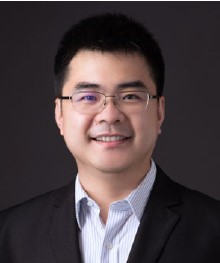Xiaomu Wang
2D Materials
Nanjing University, Nanjing, China
Email: Xiaomu.wang@nju.edu.cn
Biography
Dr. Xiaomu Wang received his Ph.D degree from CUHK on Aug 2012, after studied in the Department of Electronic Engineering for three years. After graduation, he underwent his postdoctoral training at University of Cambridge and Yale University. On October 2016, he entered Nanjing University as a full Professor in the School of Electronic Science and Engineering. His research includes the fields of infrared and nano- photonics of two-dimensional materials. He got Outstanding Young Investigator Award from Qiu Shi Science and Technology Foundation in 2019.
|
|
Abstract for Presentation
Novel Plasmons in Twisted Bilayer Graphene
The Moiré super-lattices has led to the observations of exotic emergent electronic properties such as superconductivity and strong correlated states in small rotation angle twisted bilayer graphene (tBLG) [1,2]. Recently, these findings has inspired the search for novel properties in Moiré plasmons. Although plasmon propagation in tBLG basal plane has been studied by near-field nano-imaging technique[3-7], the general electromagnetic character and properties of these plasmons remain elusive. Here, we report the direct observation of two new plasmon modes in macroscopic tBLG with highly ordered Moiré super-lattice. Utilizing spiral structured nano-ribbons of tBLG, we identified signatures of chiral plasmons which arises due to the uncompensated Berry flux of the electron gas under optical pumping. Salient features of these chiral plasmons are revealed through their dependence on optical pumping intensity and electron fillings, in conjunction with distinct resonance splitting and Faraday rotation coinciding with spectral window of maximal Berry flux. Moreover, we also identified a slow plasmonic mode around 0.4eV, which stemmed from interband transitions between the nested subbands in lattice-relaxed AB-stacked domains. It might open up opportunities for strong light-matter interaction within the highly sought-after mid-wave IR spectral window[8]. Our results unveil the novel electromagnetic dynamics of small angle tBLG and exemplify it as a unique quantum optical platform.
References
[1] Cao, Y. et al. Nature 556, 80-84 (2018).
[2] Cao, Y. et al. Nature 556, 43-50 (2018).
[3] Hesp, N. C. H. et al. Nature Physics 17, 1162-1168 (2021).
[4] Hu, F. et al. Physical Review Letters 119, 247402 (2017).
[5] Sunku, S. S. et al. Science 362, 1153-1156 (2018).
[6] Ni, G. X. et al. Nature Materials 14, 1217-1222 (2015).
[7] Brey, L., et al. Physical Review Letters 125 (2020).
[8] Jalali, B. et al. IEEE Journal of Selected Topics in Quantum Electronics 12, 1618-1627
WELCOME TO CHINA TO ATTEND THE ICANS
23-26 August, Nanjing, China
Connect with us:



